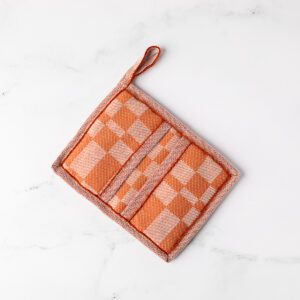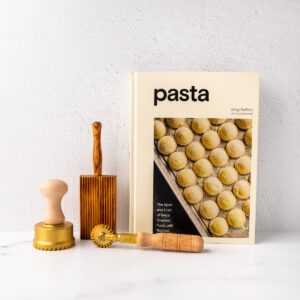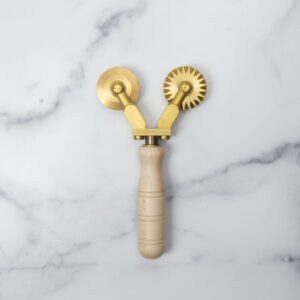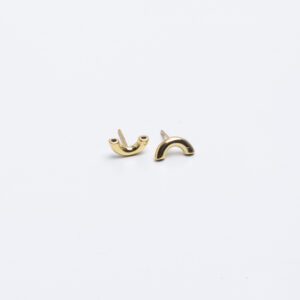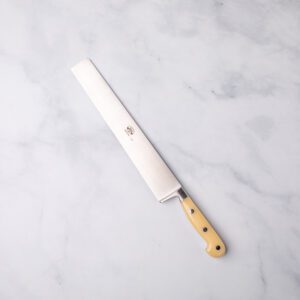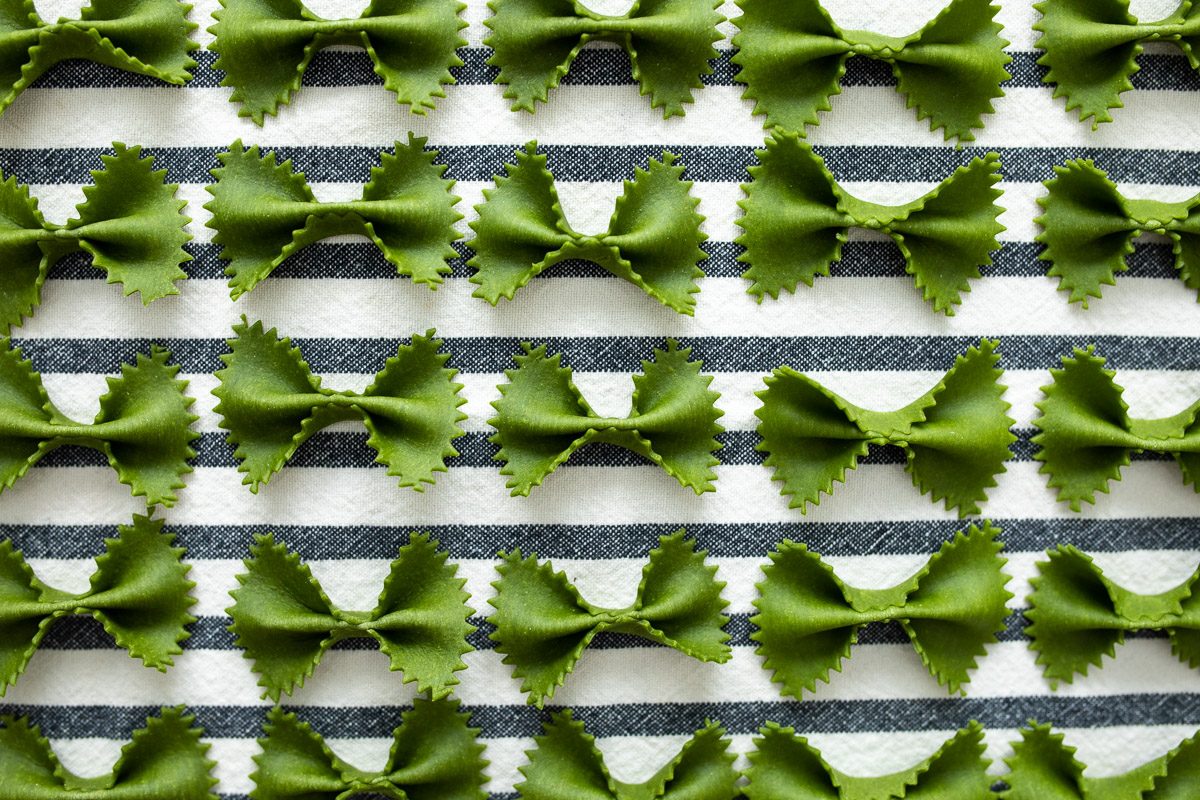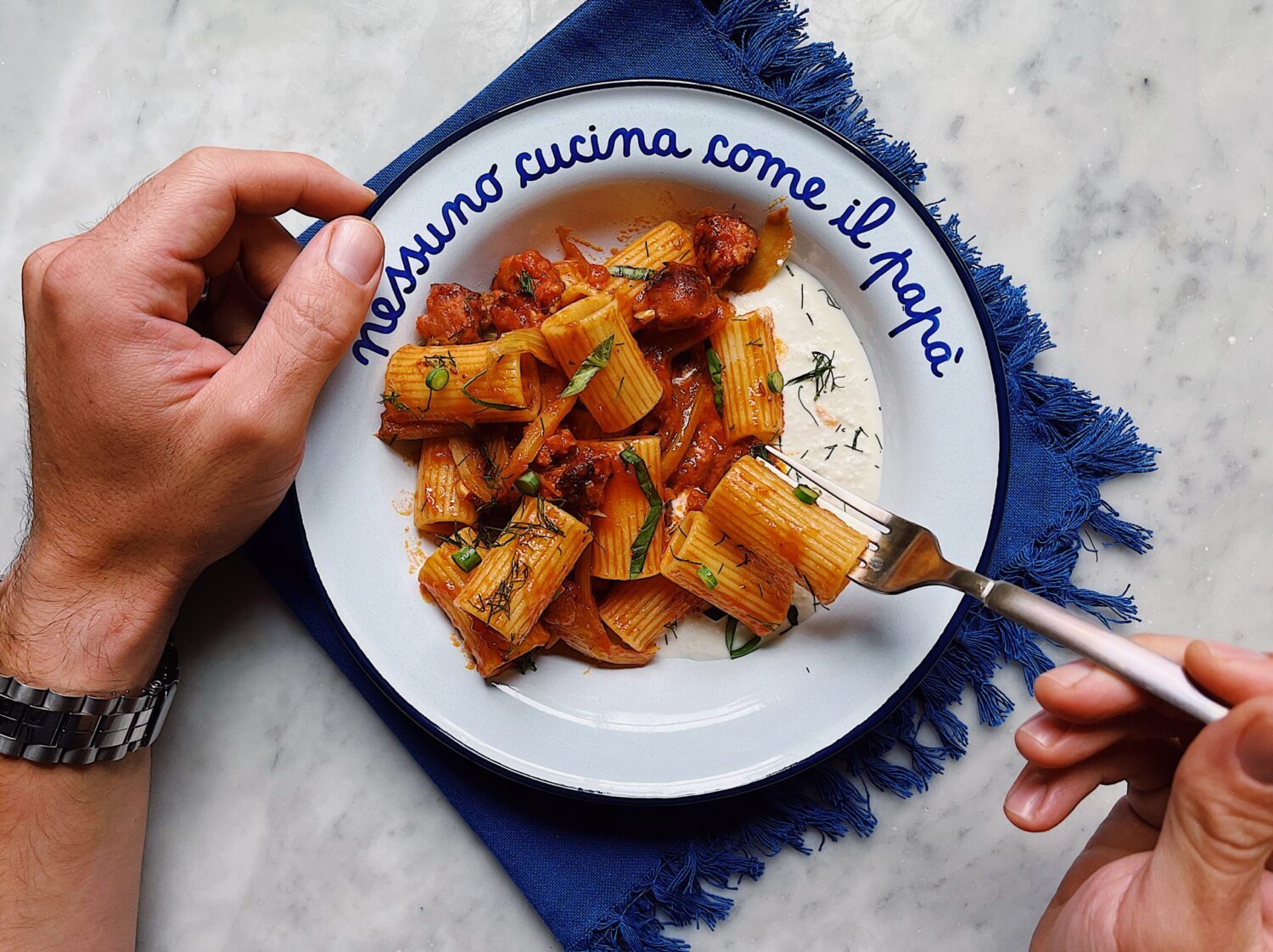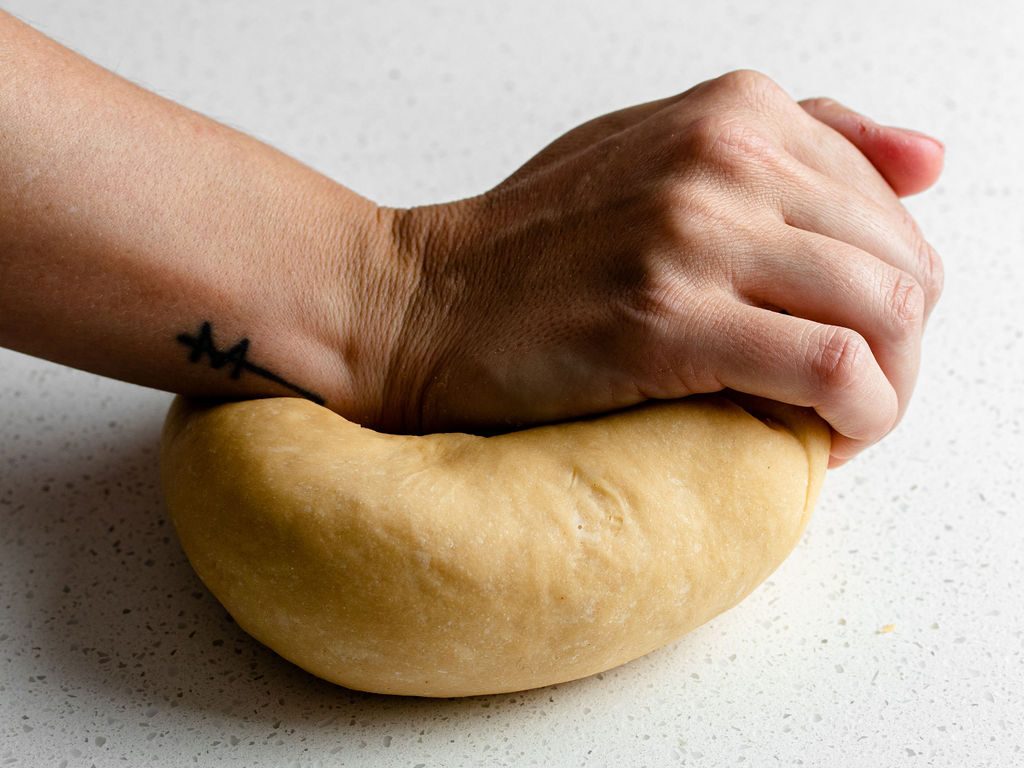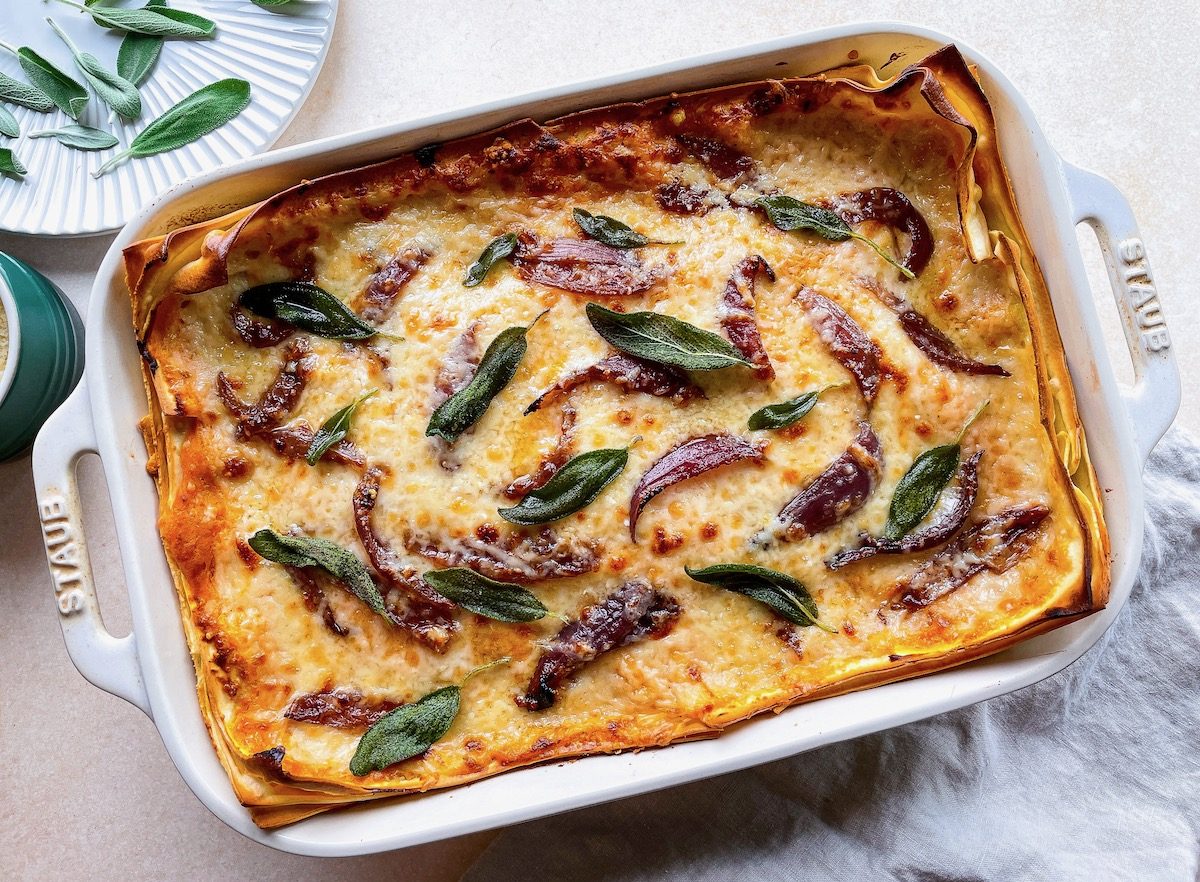
Autumn Lasagne with Winter Squash, Roasted Onions & Sage
Recipe and photos by Meryl Feinstein
When the air is crisp and smells faintly of pine, I know my favorite season has arrived. And after three years of living in the south (where summer heat knows no bounds!), I’m taking full advantage of autumn produce and cozy project cooking.
Enter this lasagne: sweet winter squash, roasted red onions, and rich Alpine cheeses layered between sheets of fresh pasta, then baked into a heavenly tower of fall flavors and topped with crisp, crackly sage. Lasagne is always a bit of a time commitment, but I’ve tried to streamline the process by making especially good use of the oven. Plus, the fillings can be made up to three days ahead, so you can keep your focus on the pasta and assembly the day you’re ready to bake.
Autumn Lasagne with Winter Squash, Roasted Onions & Sage
Serves 8
Prep time: 3 Hours
Cook time: 2 Hours
Special Equipment
Pasta machine
Straight pasta wheel
Ingredients
For the pasta:
400 grams ‘00’ pasta flour or all-purpose flour, plus more for dusting
50 grams semola rimacinata or semolina flour (Optional–if you don’t have it, replace it with the same weight of ‘00’ or all-purpose flour.)
255 grams (about 5 large) eggs
255 grams (about 5 large) eggs
255 grams (about 5 large) eggs
For the squash layer:
1.1 kg (2½ pounds) sweet winter squash like honey nut or butternut
Extra-virgin olive oil
Kosher salt and freshly ground black pepper
225 grams (1 cup) full-fat ricotta
70 grams (2½ ounces) finely grated Parmigiano-Reggiano, plus more for topping
Whole nutmeg
1 large egg
1 large egg
For the onions:
1.1 kg (2½ pounds; about 4 medium) red or yellow onions, peeled and cut into ¼-inch wedges or half-moons
30 ml (2 tablespoons) extra-virgin olive oil
Kosher salt and freshly ground black pepper
8 to 10 fresh sage leaves
55 grams (¼ cup) unsalted butter, cut into small cubes
15 ml (1 tablespoon) high-quality balsamic vinegar
15 ml (1 tablespoon) high-quality balsamic vinegar
For the cheese sauce:
55 grams (¼ cup) unsalted butter
55 grams (⅓ cup) all-purpose flour
750 ml (3¼ cups) whole milk
340 grams (12 ounces) grated Fontina, Gruyere, Asiago, or a mix, divided
Whole nutmeg
Kosher salt
Kosher salt
For finishing:
15 to 30 grams (1 to 2 tablespoons) unsalted butter
15 ml (1 tablespoon) extra-virgin olive oil
16 fresh sage leaves
Method
To make the pasta dough:
1. Make the pasta dough by hand (see instructions for the “well method”) and knead it vigorously until smooth and firm, about 10 minutes. Alternatively, add the flour(s) and eggs to a food processor fitted with a steel blade. Pulse in a few brief increments until the ingredients are evenly distributed and couscous-like beads of dough form (the mixture should come together easily when pressed). Transfer the dough to a work surface and knead for 5 to 10 minutes, until the dough is smooth and homogeneous.
2. Wrap the dough tightly in plastic wrap and allow it to rest at room temperature for at least 30 minutes and up to 2 hours.
Roast the vegetables:
1. Heat the oven to 375°F.
2. If using smaller honeynut squashes, trim the stems, cut them in half lengthwise, and scoop out the seeds; if using a large butternut, cut it in half crosswise (where the neck meets the base), then carefully halve both pieces north to south and scoop out the seeds. Coat the pieces in olive oil and season generously with salt and pepper. Arrange the squash, cut-sides up, on a parchment-lined sheet pan.
3. Add the onions to a 9×13 baking dish and coat with olive oil, salt, and pepper. Tuck the sage leaves under the first layer of onions. Dot the butter cubes on top.
4. Put the vegetables in the oven and roast, stirring the onions every 20 minutes, until the squash is very tender, about 1 hour. Remove the squash from the oven and continue roasting the onions until they’re soft and sweet, about 30 minutes more.
5. When the onions are ready but still warm, discard the sage and any especially charred/tough pieces. Stir in the vinegar and adjust seasoning to taste. Transfer to a bowl and wash out the baking dish—you’ll need it for the lasagne.
6. Let the vegetables cool.
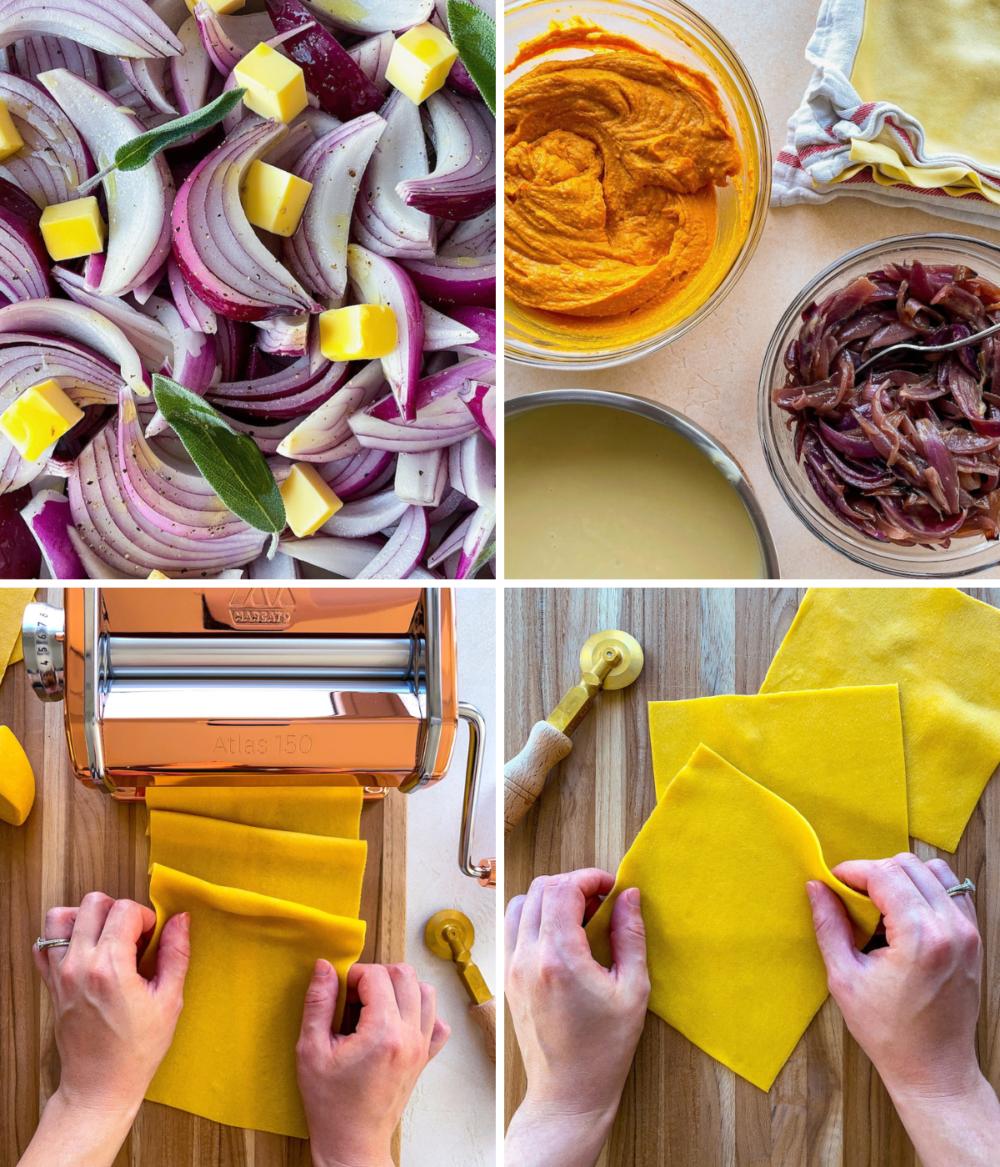
Make the squash filling:
1. Scoop the cooled squash from its skin into a food processor fitted with the steel blade. Add the cheeses and pulse until smooth and creamy. Season to taste with salt, pepper, and a generous grating of nutmeg.
2. Transfer the mixture to a bowl and fold in the egg. The squash filling and onions can be refrigerated in an air-tight container for up to 3 days (let them stand at room temperature for about an hour before use).
Roll and blanch the pasta sheets:
1. Bring a large pot of water to a boil and salt it generously. Fill a large bowl with ice water. Line a sheet pan with a clean dishcloth/tea towel and keep a few more on hand.
2. Cut off a quarter of the dough and re-wrap the remainder.
3. On a wooden work surface (a cutting board works great!), flatten the dough into a rough oval with the heel of your hand until it’s about ¼-inch thick. Set your pasta machine (I use a Marcato Atlas 150) to its widest setting (#0) and roll the dough through once (it will be tapered at the ends). Rotate the dough 90 degrees and fold the ends into the center like an envelope, so the width of the folded pasta sheet is similar in width to the pasta roller. Flatten the dough again with your palm, then roll it through the widest setting once more so you’re left with an even-ish rectangle.
4. Continue rolling the pasta sheet through the machine once on each progressive setting until you have a thin but sturdy sheet (setting #6 on the Marcato Atlas). If the dough is at all sticky as it goes through the machine, or the sheet starts to tear on the surface, dust both sides with a little ‘00’ or all-purpose flour.
5. Use a straight pasta wheel or sharp knife to cut the sheet into about 6-inch squares—it doesn’t matter if they’re perfect; you’ll be cutting them again later to fill your dish. Ball up any scraps and rewrap them—they can be re-rolled at the end if needed.
6. If you have the space, set the squares to the side (or on another wooden cutting board), or place them in a single layer between sheets of parchment paper. Repeat the process with the remaining dough.
7. Drop a few pasta squares into the boiling water and gently stir. Cook for 30 seconds, then use a spider sieve to transfer the pasta to the ice water. When cool, shake off any excess water and arrange the squares in a single layer on the dishcloth/tea towel and pat dry. Repeat with the remaining squares, layering them between clean cloths.
Make the cheese sauce:
1. Reserve 55 grams (2 ounces/a large handful) of the grated cheese for topping.
2. In a medium saucepan, melt the butter over medium heat. Add the flour and cook, using a whisk to mix constantly, until it smells nutty and the mixture starts to loosen and bubble, 2 to 3 minutes.
3. Whisking constantly, gradually add the milk, either in a slow, steady stream or a splash at a time. It’ll get very thick at first and then loosen significantly.
4. Increase the heat to medium-high and, still whisking, cook until the sauce thickens to the consistency of heavy cream and coats the back of a spoon, about 5 minutes (it’ll continue to thicken as it cools).
5. Turn off the heat. Whisk in the remaining 285 grams (10 ounces) of grated cheese one handful at a time until smooth, letting each addition melt before adding the next. Season to taste with salt and nutmeg.
6. If you’d like, cover the surface of the sauce with a layer of plastic wrap to help prevent a skin from forming. Whisk again before use.
Assemble and bake the lasagne:
1. Heat the oven to 375°F.
2. Grease a 9×13 baking dish with butter or olive oil. Ladle in a thin layer of the cheese sauce, spreading it out with the bottom of the ladle or a spoon. Layer some pasta on top to fill the dish, cutting and overlapping the pieces as needed (I usually use two full squares and cut a third in half to fill in the gaps; for crispy edges, let some of the pasta wrap up the sides of the dish).
3. Dollop some of the squash mixture on top of the pasta and spread it into a thin layer using the back of the spoon or an offset spatula—don’t worry if there are gaps. Sprinkle the squash with some of the onions, then add another thin layer of cheese sauce and spread it out on top. Repeat the process until you have 5 layers—when you get to the final layer of pasta, spread the last of the squash mixture on top, then decorate it with onions, and finally cover it with a layer of cheese sauce.
4. Sprinkle the top with the reserved grated cheese(s) and plenty of Parmigiano-Reggiano.
5. Cover the baking dish tightly with foil and bake for 30 minutes. Uncover and bake until bubbling and golden around the edges, 15 to 20 minutes more. Broil the top for a few minutes for extra color, then remove from the oven. Let stand for at least 20 minutes (or up to 2 hours) before serving.
6. While the lasagne bakes, warm the butter and olive oil in a medium saucepan over medium-high heat. Add the sage leaves and fry briefly until darked and crisp, then transfer to a paper-towel lined plate.
7. Arrange the fried sage on top of the lasagne and serve. The leftovers will keep, covered in the refrigerator, for 3 to 5 days.
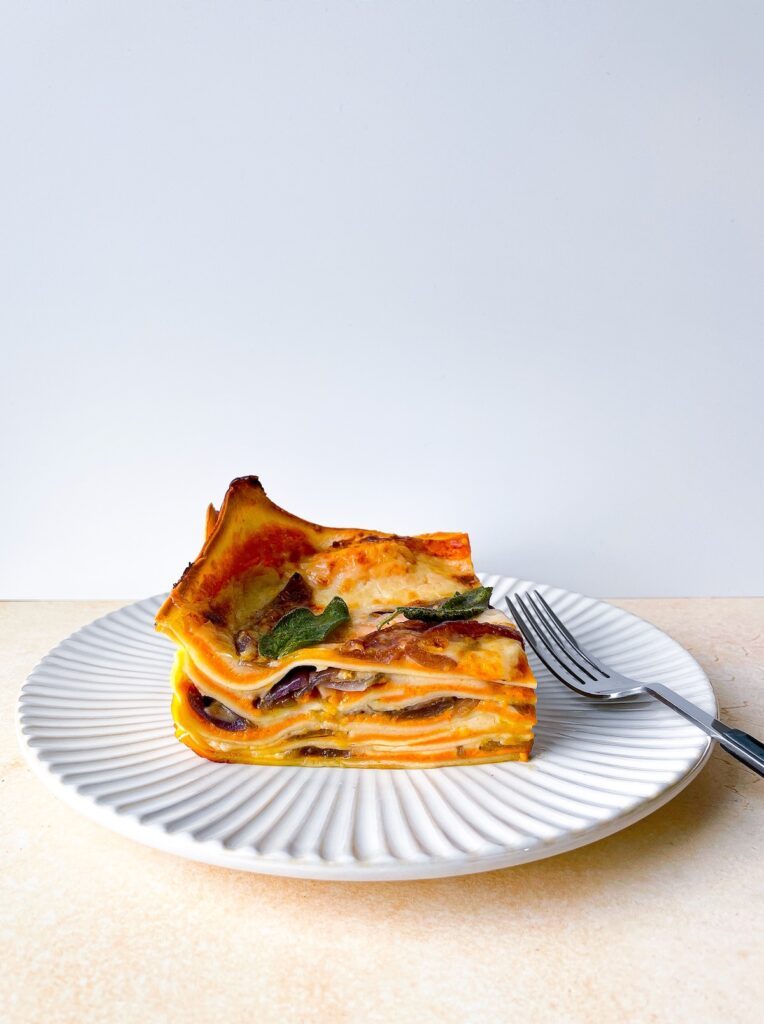

Meryl Feinstein is a chef, pasta maker, and food writer who left the corporate world for the food industry in 2018. After graduating from the Institute of Culinary Education, Meryl got her start at the renowned New York establishments Lilia and Misi, where she was part of the pasta production team. During her time in New York, she founded Pasta Social Club, a platform that brings people together over a shared love of food, learning, and making connections both on- and offline. Meryl now lives in Washington, D.C., where she develops recipes and teaches pasta-making workshops. She is the author of Pasta Every Day, a guide to making pasta doughs, shapes, fillings, and sauces with joy and confidence for all home cooks, which will be published in September 2023. Her dishes draw on her travels in Italy, ongoing research into the rich history of traditional pasta making, and her Jewish heritage.
Post a Comment
You must be logged in to post a comment.


